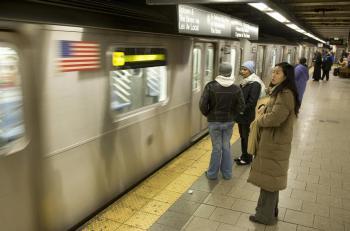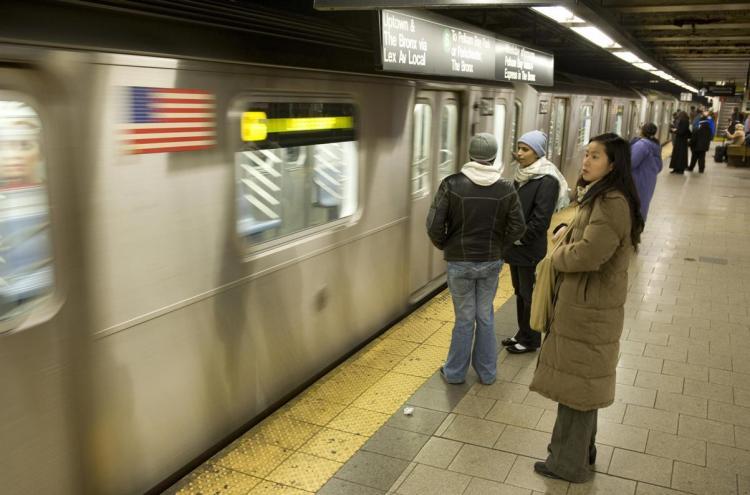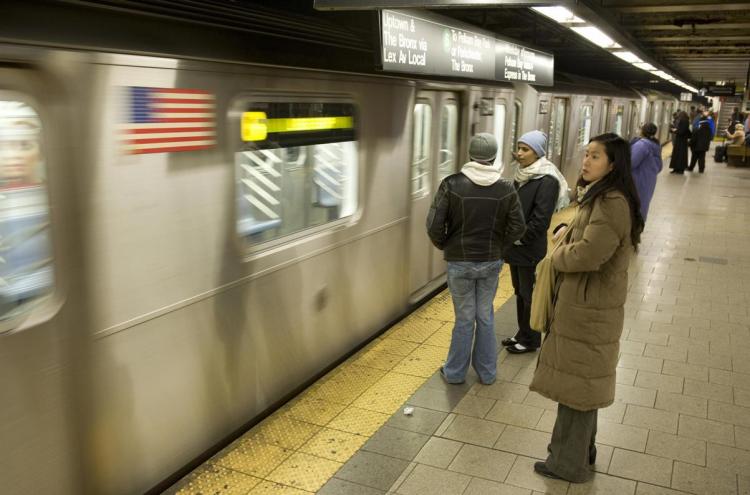NEW YORK—Transit and transportation has seen a full year in the big city. For a review:
-Tunneling for the Second Avenue subway line began. Small businesses along Second Avenue complained of business loss due to the noise and dust. An association of 40 businesses began the legislative process to garner financial support during the construction process. Their plan included a grant, property tax abatement, and a period of no sales tax to attract customers.
-Transit groups said the city must pare down on unneeded parking. They asked the city to do away with zoning requirements that force builders to provide a certain amount of parking whether the demands is there or not.
-New York Metropolitan Transportation Council held public workshops to gather ideas to develop a transit plan for the next 15 years. 2009 will be the year the details of that plan get hashed out and funding is allocated.
-New commercial buildings will be mandated to provide indoor bike racks. While the original proposed bill included current landlords, the change is a step in the right direction, said transit advocates. On the flip side, the State funds allocated to adding bike lanes were slashed in half for the coming fiscal year, delaying goals to make NYC thoroughly bike friendly by 2030.
-In other biking news, the Department of Transportation held a global bike rack design contest to find the shape of New York City’s next standard bike rack. The winner’s design was turned over to the city for popular adoption.
-To encourage city planners to develop mixed-use areas (residential and commercial) near transit hubs, the Tri-State Transportation Campaign, a non-profit group that promotes transit-oriented development (TOD), gave grants up to $50,000 each. The grants are meant to supplement municipal funds. Grants will be awarded next month.
-Parking laws got tweaked a bit. Now drivers may park for the maximum allowed time at nonfunctional meters whether they are broken or missing. Also, if street cleaning doesn’t happen because of a snow storm, the city can no longer ticket you for not moving your car.
-The State Department of Transportation issued a report that said transit use grew since 2003. Meanwhile, the change in automobile travel remained stable, making it the first time since World War II that transportation growth occurred only in public transit. Of that change, bike travel grew the most, by 70 percent since 2002.
-To mend a $1.2 billion hole in the MTA budget, Albany commissioned former MTA head Richard Ravitch to come up with a solution for the ailing transit authority. He and his team came up with such ideas as tolling East River bridge users, a small across-the-board payroll tax, and a lock-key fund to be set up for the MTA. A few others, including City Comptroller William Thompson, also pitched in; Thompson suggested a weight-based vehicle registration fee that would discourage the purchase of SUVs. The MTA opted chose none of the suggestions, opting instead to raise fares by 23 percent in June, reducing the frequency of service, and cutting several bus and subway lines.
-Congress approved a nationwide plan to built 11 regional high-speed rail networks. The one to serve New York would take passengers to Washington, DC in under two hours, factoring stops along the way. The plan was inspired by such rail systems in Europe and Asia. The U.S. Transportation Secretary began soliciting proposals from entities willing to design, build, maintain, and operate such rail lines for their regions.
-Tunneling for the Second Avenue subway line began. Small businesses along Second Avenue complained of business loss due to the noise and dust. An association of 40 businesses began the legislative process to garner financial support during the construction process. Their plan included a grant, property tax abatement, and a period of no sales tax to attract customers.
-Transit groups said the city must pare down on unneeded parking. They asked the city to do away with zoning requirements that force builders to provide a certain amount of parking whether the demands is there or not.
-New York Metropolitan Transportation Council held public workshops to gather ideas to develop a transit plan for the next 15 years. 2009 will be the year the details of that plan get hashed out and funding is allocated.
-New commercial buildings will be mandated to provide indoor bike racks. While the original proposed bill included current landlords, the change is a step in the right direction, said transit advocates. On the flip side, the State funds allocated to adding bike lanes were slashed in half for the coming fiscal year, delaying goals to make NYC thoroughly bike friendly by 2030.
-In other biking news, the Department of Transportation held a global bike rack design contest to find the shape of New York City’s next standard bike rack. The winner’s design was turned over to the city for popular adoption.
-To encourage city planners to develop mixed-use areas (residential and commercial) near transit hubs, the Tri-State Transportation Campaign, a non-profit group that promotes transit-oriented development (TOD), gave grants up to $50,000 each. The grants are meant to supplement municipal funds. Grants will be awarded next month.
-Parking laws got tweaked a bit. Now drivers may park for the maximum allowed time at nonfunctional meters whether they are broken or missing. Also, if street cleaning doesn’t happen because of a snow storm, the city can no longer ticket you for not moving your car.
-The State Department of Transportation issued a report that said transit use grew since 2003. Meanwhile, the change in automobile travel remained stable, making it the first time since World War II that transportation growth occurred only in public transit. Of that change, bike travel grew the most, by 70 percent since 2002.
-To mend a $1.2 billion hole in the MTA budget, Albany commissioned former MTA head Richard Ravitch to come up with a solution for the ailing transit authority. He and his team came up with such ideas as tolling East River bridge users, a small across-the-board payroll tax, and a lock-key fund to be set up for the MTA. A few others, including City Comptroller William Thompson, also pitched in; Thompson suggested a weight-based vehicle registration fee that would discourage the purchase of SUVs. The MTA opted chose none of the suggestions, opting instead to raise fares by 23 percent in June, reducing the frequency of service, and cutting several bus and subway lines.
-Congress approved a nationwide plan to built 11 regional high-speed rail networks. The one to serve New York would take passengers to Washington, DC in under two hours, factoring stops along the way. The plan was inspired by such rail systems in Europe and Asia. The U.S. Transportation Secretary began soliciting proposals from entities willing to design, build, maintain, and operate such rail lines for their regions.








Friends Read Free